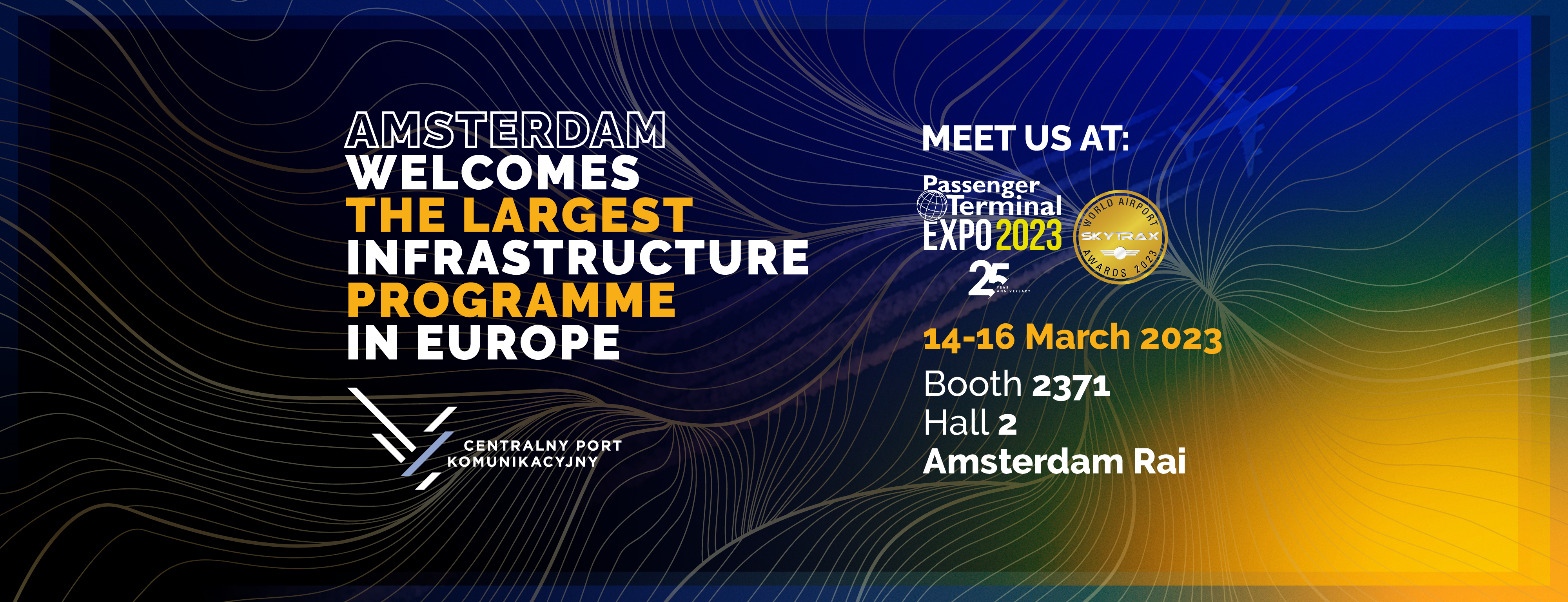
By 2028 the new airport in the centre of Central and Eastern Europe is expected to have a capacity of 40 million passengers per year. Mikołaj Wild, President of Centralny Port Komunikacyjny, is to talk about the progress of CPK, new contracts and innovative concepts undertaken with international partners at the Passenger Terminal Expo.
One of the gems of this year's conference, Passenger Terminal Expo in Amsterdam, is the attendance of CPK’s representatives – a new transfer airport, planned in the centre of Poland between Warsaw, the capital, and Łódź, one of the country's largest cities.
As of now, none of the 19 countries of Central and Eastern Europe has a hub airport on a global scale. Even though these countries are inhabited by 180 million people. They can now gain such a port which, according to the IATA analysis, should handle 40 million passengers and 1 million tonnes of air cargo in 2035. PwC conducted a study showing that “the growth potential of the Polish aviation market is among the highest across Europe.”
With the war in Eastern Europe, transport through Poland has gained international importance. As the US Ambassador to Poland, Mark Brzezinski, said: “Current events have shown that reliable and resilient rail infrastructure is incredibly important for the safety and security of the region.”
While in many countries’ investments are curtailed, in Poland it is the opposite. In addition, new tracks being laid in Poland are of strategic importance for the development of the railways in the region and the shape of the future High-Speed Rail network in the Three Seas countries (Austria, Bulgaria, Croatia, Czech Republic, Estonia, Hungary, Latvia, Lithuania, Poland, Romania, Slovakia, and Slovenia). Many of these sections form part of the Trans-European Transport Network (TEN-T).
Increasing numbers of foreign entities are also involved in the construction of CPK. After Incheon Airport became a strategic partner, contracts were then signed with Foster + Partners and Buro Happold (Master Architect), with Dar Al-Handasah (Master Civil Engineer), IDOM (Airport Systems Integration Designer) and Hill International.
The entire project is prepared in such a way as to protect the environment. More green transport (such as rail) means a reduction in domestic flights. The airport is envisaged to use photovoltaics, while the company's extensive expert report on how to achieve the least impact on wildlife during construction is more than 20,000 pages long.
CPK means a revolution for many people in Poland, and not only due to the construction of the new airport. In addition, a network of almost 2,000 km of railway lines is to be constructed as part of the investment, including High-Speed Railway systems, thanks to which travel times to Warsaw from the largest cities (including Kraków, Poznań and Gdańsk) will no longer exceed 2.5 hours. This means shortening journeys by half, with many smaller towns excluded from such transport systems gaining new stations and connections.
CPK is undoubtedly an ambitious Polish mobility project in the heart of Europe. You can hear more about this mega- investment’s details soon at the Passenger Terminal Expo. President Mikołaj Wild is due to talk about CPK, while numerous experts from the company, dealing with airport design, answer questions about CPK at stand 2371. Welcome!
